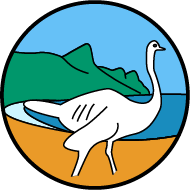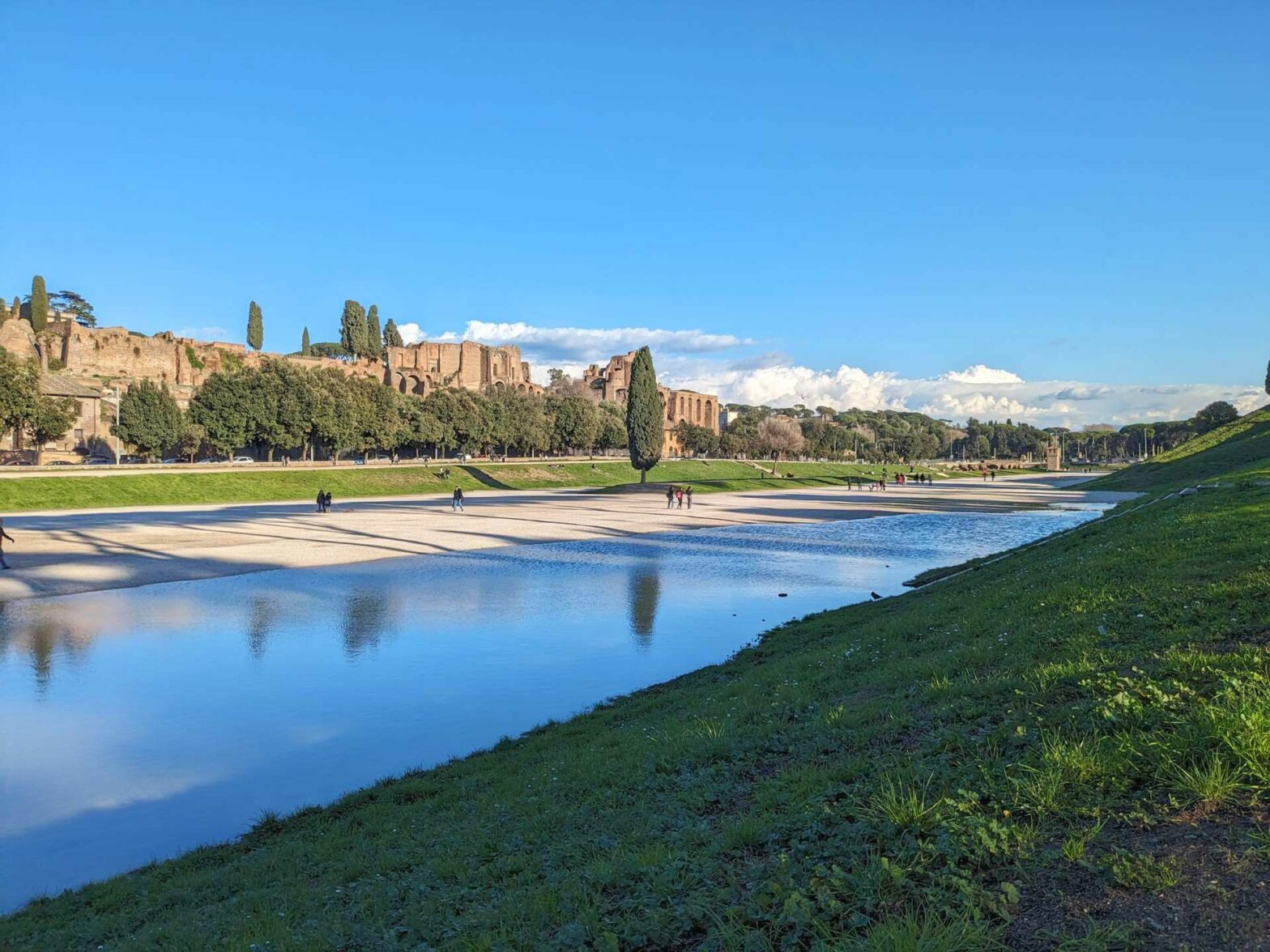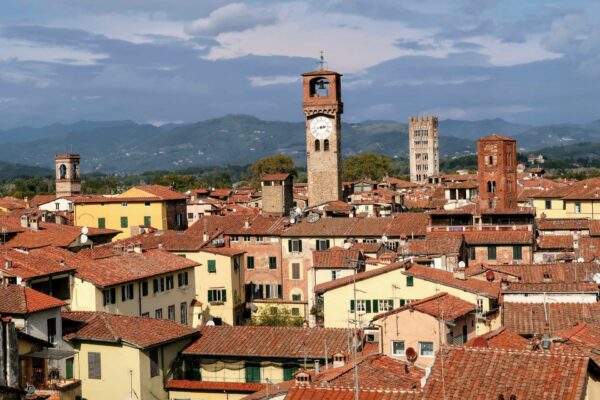By Vicky · Published Mar. 7th, 2024
When you buy through links highlighted with an asterisk (*) on this site, we may earn a small affiliate commission at no cost to you.
This self-guided walking tour through the Lateran & Aventine districts of Rome brings you to wonderful churches, viewpoints and more.
Page Contents:
Location
This walking tour starts from the bus stop just outside San Clemente Church. It’s a short bus ride from the Monument to Victor Emmanuel II or elsewhere in central Rome. Alternatively, it’s just a 5-minute walk from the Colosseum.
Aventine & Lateran Walking Tour Map
Tips for Aventine & Lateran Walking Tour
- You can’t enter most churches wearing shorts or sleeveless shirts.
- In the summer, make sure to get tickets to the excavations at San Clemente church in advance (book tickets or a guided tour*).
- There’s lots to see on this walking tour, so allow at least half a day.
- For other great walks in and around Rome, walk along Via Appia Antica, check out Ostia Antica, discover the Park of the Aqueducts, or for more walking tours and hikes see our Italy page.
Top Things to See in Aventine & Lateran
On this self-guided tour through the Lateran and Aventine districts of Rome, you’ll see all the best sights in the area:
- San Clemente
- Santi Quattro Coronati
- San Giovanni in Laterano
- Santo Stefano Rotondo al Celio
- Basilica Santi Giovanni e Paolo
- Circus Maximus
- Terrazza Belvedere Aventino
- Santa Sabina
- Santa Maria in Cosmedin
- Forum Boarium Temples
Aventine & Lateran Walking Tour Route
This walking tour starts from a bus stop by San Clemente Church.
1. San Clemente
Key Information: Open daily 9 am-12:30 pm & 2-6 pm, Sunday 12-6pm. To visit the archeological excavations, either reserve a ticket online or book a guided tour* in advance, as entry is limited.
The church of San Clemente is free to enter and contains some lovely mosaics. However, the real highlight is what lies below. Underneath the church, you’ll find several layers of history, including a Temple of Mithras, Roman buildings and further excavations. It’s one of the best examples of the multi-layered and long history of Rome, with buildings replacing older buildings over time as new ideas come and go. Included in your ticket is a short written guide to the site, while if you want a guided tour this has to be booked separately*.
Directions: Leave the church and head right up the steps and continue along the street. Take the second left, following the signs to Santi Quattro Coronati, which is a short distance up the hill on the right.
2. Santi Quattro Coronati
Key Information: Open every day, but closed for lunch from 11:45am-3:15pm. Free entry.
Santi Quattro Coronati is a medieval monastery and fortress, founded back in the 5th century. What you see today was built largely in the 11th and 13th centuries, following an earlier fire. It’s a lovely, peaceful place, with a lot of history. There are beautiful cloisters, frescoes, floor mosaics and much more to see in this atmospheric place.
Directions: Continue up the cute small street and turn left at the top. You’ll see the large church complex opposite. Head around the left side to find the entrance.
3. San Giovanni in Laterano
Key Information: Main basilica open 7am – 6:30pm daily. The Holy Steps are open Mon-Sat 9am-1pm & 3-5pm, on Sundays only in the afternoon. The main basilica & Holy Steps are free entry. To visit the other sections (museum, Sancta Sanctorum Chapel, monastery & baptistery) you need a ticket*.
San Giovanni in Laterano is known as the mother church of all Roman Catholic churches worldwide. This is because it’s the cathedral church of Rome and the official ecclesiastical seat of the Bishop of Rome, who is the Pope. He gives services here a couple of times every year, and you can see the highly decorated bishop’s throne that only he is allowed to sit in. The current basilica was constructed in the 17th century, primarily by Borromini. There’s a grand façade, a large nave, and many large, impressive sculptures.
While the main church is free, you need to get a ticket* to visit the other sections of the Lateran complex. Tickets include an audioguide, and to see everything fully you need to spend around 2 hours.
When you leave the entrance to the church, look to your left to another chapel with an outer apse mosaic. Inside this building are the Scala Santa, or Holy Steps, believed to be the steps from Pontius Pilate’s palace that Jesus climbed during his Passion. It’s free to climb up these stairs, but as pilgrims have always traditionally done, you have to ascend them on your knees.
Directions: Return where you came from, but instead of walking back down the street towards the monastery, continue onwards. This small road parallels part of an ancient wall. Just before you reach a T-Junciton at the end, head left into a little courtyard where you’ll find the next unusual church.
4. Santo Stefano Rotondo al Celio
Key Information: Open Tue-Sun, 10 am-1 pm & 2-5 pm.
Santo Stefano Rotondo al Celio is a rather unique church and has a great peaceful atmosphere. The current structure dates from the 6th century, and you can feel that it’s old. The round design was inspired by churches in the Holy Land, and around the edge of the circle are little chapels covered in frescoes.
Directions: At the T-Junction, cross the road and head right, then walk left through the small gate. When you reach a courtyard by the next church, head first left and into the Villa Celimontana Park. It’s very peaceful here, with lots of benches in the shade.
5. Basilica Santi Giovanni e Paolo
Key Information: Open 8:30 am–12:45 pm & 2–5 pm.
The Basilica Santi Giovanni e Paolo (Church of St John & St Paul) was originally built in the 4th century on the site where, according to tradition, two Roman soldiers and Christian martyrs, John and Paul, were buried. Today their tomb is located in the ancient Romanesque crypt below the church.
Directions: Continue down the hill through the arches. On your right you’ll see the Archaeological Park of the Celio. This is a small park containing hundreds of fragments of ancient ruins. There aren’t many description boards, but it’s a pleasant place to wander and have a break for a few minutes. Leave the park the same way you entered, and follow the road downhill as it bends left. This road leads you downwards to a junction, and the Circus Maximum park is on the other side.
6. Circus Maximus
Today the Circus Maximus is a park that follows the outline of an ancient Roman chariot racing stadium. The stadium was probably first constructed in the 6th century BC, with many additions and alterations over time. After the fall of the Roman Empire, most of the building materials were scavenged away, though there are still a few remnants. Additionally, from the park you can see the impressive ruins on the Palatinate Hill. The best viewpoint is on the upper side of the park where there’s a small viewing terrace.
Directions: From the viewing terrace, head upwards and away from the park, slightly to the right. Up the road and around the corner, you’ll see a park full of orange trees on your right. The entrance is at the far end.
7. Terrazza Belvedere Aventino
The Terrazza Belvedere Aventino is a popular viewpoint in Rome, in a quiet orange garden on top of the Aventine Hill. You can see parts of central Rome, the Tiber River, and over to the Trastevere Neighbourhood. It’s especially nice in the late afternoon and evening.
Directions: Leave the park and you’ll see the church next door.
8. Santa Sabina
Key Information: Open Tue-Sat 8am-7pm, Sun-Mon 12-7pm.
The Basilica of Santa Sabina is an ancient church, built in the early 5th century. It is one of the oldest Roman basilicas and has retained much of its original character. The interior features 24 Ionic columns recycled from older Roman buildings and early Christian mosaics, while the church entrance includes several old Corinthian columns and an intricately carved wooden door.
Directions: Just further up the road is the Knights of Malta Keyhole, through which you can see St Peters Dome. See this if you want to, or start walking back down the street. Take the cobbled lane to the left just after the orange garden. At the bottom, turn right and you’ll reach the church.
9. Santa Maria in Cosmedin
Key Information: Open daily 9:30 am-6 pm.
The Santa Maria in Cosmedin Church is most famous for the ‘Mouth of Truth’, or ‘Bocca della Verità’, an ancient Roman marble mask. Legend has it that if you put your hand in its mouth and then tell a lie, the jaws snap shut. A lesser-known fact is that this church contains the skull of St Valentine, on the left side of the nave.
Directions: You’ll see the temples and the last stop on the Aventine & Lateran walking tour opposite the church.
10. Forum Boarium Temples
The Forum Boarium Temples are a pair of small old temples that have survived from Roman times, in what used to be a hub of economic activity by the Tiber River. The round temple is the Temple of Hercules Victor, dating back to the 2nd century BC, while the square one is the Temple of Portunus, dedicated to the ancient Roman god of keys, doors, and livestock.
Directions: This is the end of the self-guided Lateran & Aventine Walking Tour. From here you can either explore further (see below), head across the river to nearby Trastevere, or take the bus to anywhere else in Rome.
Explore Further
If you feel like walking a little further around the Lateran & Aventine districts, then there are a couple more noteworthy sites. The largest of these is the Baths of Caracalla, where you could spend a few hours, while the others only take a few minutes to look around. If you’re planning to visit Ostia Antica, the train station to get there is right next to the Pyramid of Caius Cestius and the Protestant Cemetery.
Baths of Caracalla
Key Information: Open Tue-Sun from 9am, closes between 16:30 and 7:15pm from winter to summer. Tickets cost €10, or go on a guided tour*.
The Baths of Caracalla were among the largest and most impressive public baths in ancient Rome. It housed large bathing chambers, hot and cold rooms, gyms, libraries, and other recreational spaces. Pleasure gardens surrounded the complex, allowing for complete relaxation. Today, the Baths of Caracalla are a well-preserved archaeological site. While much of the original structure has been lost, the ruins still have a sense of grandeur and because it’s slightly out of the centre, it’s much less crowded than other Roman ruins in Rome.
Book a guided tour of the Baths of Caracalla*
Pyramid of Caius Cestius
The Pyramid of Caius Cestius was built between 18 and 12 BC as a tomb for Caius Cestius, a Roman magistrate. At the time the Roman population was fascinated by Rome, hence the unusual shape. You can’t go in, but can admire it from the outside. The Porta San Paolo, a gate in the old Auralien Walls is just next door, as is the Protestant Cemetery.
Protestant Cemetery
The Protestant Cemetery, also known as the Non-Catholic Cemetery, contains the remains of a couple of famous people. Most notably, the poets Percy Shelley and John Keats are buried here. There’s a semi-obligatory ‘donation’ of €5 to enter.
Mercato di Testaccio
Key Information: Open Mon-Sat 7 am-2:30 pm.
The Mercato di Testaccio is one of the most authentic markets in Rome. There are many stalls, mostly selling fresh produce, meat, fish etc. as well as vendors selling ready-made take-away food such as fried artichoke.
Best Guidebooks for Exploring Rome
For other great walks in and around Rome, walk along Via Appia Antica, check out Ostia Antica, discover the Park of the Aqueducts, or for more walking tours and hikes see our Italy page.





